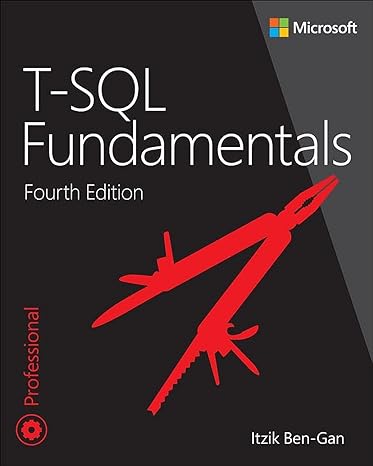Question
Modify the following code in order for it to perform the following operations: *This code is meant to simulate Floyd's cycle finding algorithm* A) Start
Modify the following code in order for it to perform the following operations:
*This code is meant to simulate Floyd's cycle finding algorithm*
A) Start with two pointers at the head of the list. We'll call the first one tortoise and the second one hare
B) Advance hare by two nodes. If this is not possible because of a null pointer, we have found the end of the list, and therefore the list is acyclic
C) Advance tortoise by one node. (A null pointer check is unnecessary. Why?)
D) If tortoise and hare point to the same node, the list is cyclic. Otherwise, go back to step 2.
C CODE:
____________________________________________________________________________________________
#include
typedef struct node { int value; struct node *next; } node;
int ll_has_cycle(node *head) { /* your code here */ }
void test_ll_has_cycle(void) { int i; node nodes[25]; //enough to run our tests for(i=0; i < sizeof(nodes)/sizeof(node); i++) { nodes[i].next = 0; nodes[i].value = 0; } nodes[0].next = &nodes[1]; nodes[1].next = &nodes[2]; nodes[2].next = &nodes[3]; printf("Checking first list for cycles. There should be none, ll_has_cycle says it has %s cycle ", ll_has_cycle(&nodes[0])?"a":"no");
nodes[4].next = &nodes[5]; nodes[5].next = &nodes[6]; nodes[6].next = &nodes[7]; nodes[7].next = &nodes[8]; nodes[8].next = &nodes[9]; nodes[9].next = &nodes[10]; nodes[10].next = &nodes[4]; printf("Checking second list for cycles. There should be a cycle, ll_has_cycle says it has %s cycle ", ll_has_cycle(&nodes[4])?"a":"no");
nodes[11].next = &nodes[12]; nodes[12].next = &nodes[13]; nodes[13].next = &nodes[14]; nodes[14].next = &nodes[15]; nodes[15].next = &nodes[16]; nodes[16].next = &nodes[17]; nodes[17].next = &nodes[14]; printf("Checking third list for cycles. There should be a cycle, ll_has_cycle says it has %s cycle ", ll_has_cycle(&nodes[11])?"a":"no");
nodes[18].next = &nodes[18]; printf("Checking fourth list for cycles. There should be a cycle, ll_has_cycle says it has %s cycle ", ll_has_cycle(&nodes[18])?"a":"no");
nodes[19].next = &nodes[20]; nodes[20].next = &nodes[21]; nodes[21].next = &nodes[22]; nodes[22].next = &nodes[23]; printf("Checking fifth list for cycles. There should be none, ll_has_cycle says it has %s cycle ", ll_has_cycle(&nodes[19])?"a":"no");
printf("Checking length-zero list for cycles. There should be none, ll_has_cycle says it has %s cycle ", ll_has_cycle(NULL)?"a":"no"); }
int main(void) { test_ll_has_cycle(); return 0; } ____________________________________________________________________________________________
Step by Step Solution
There are 3 Steps involved in it
Step: 1

Get Instant Access to Expert-Tailored Solutions
See step-by-step solutions with expert insights and AI powered tools for academic success
Step: 2

Step: 3

Ace Your Homework with AI
Get the answers you need in no time with our AI-driven, step-by-step assistance
Get Started


